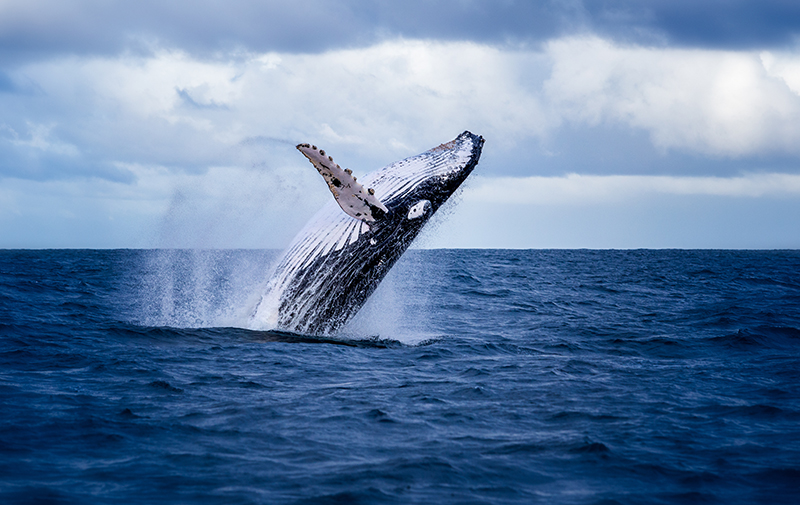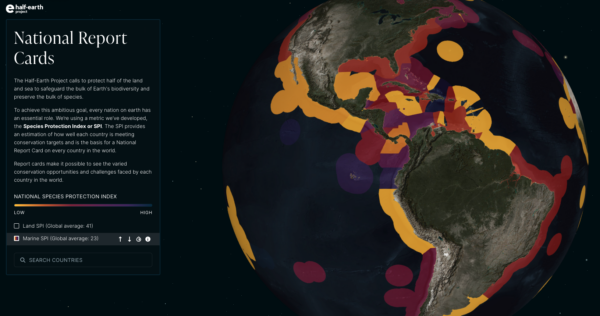

After almost two decades of negotiations, United Nations member countries have finally agreed upon an international treaty to protect oceans of the world that lie outside national borders, according to Reuters. These waters, known as “high seas,” occupy nearly two-thirds of the world’s oceans.
The world ocean’s protection and well-being is critical to all life on Earth. An estimated 50-80% of all life on earth is found under the ocean surface and the oceans contain 99% of the living space on the planet, some 70% of the planet’s surface. The ocean produces about half of all the planet’s oxygen and absorbs 25% of all carbon dioxide emissions and captures 90% of the excess heat generated by carbon dioxide emissions. Much of marine life migrates between the high seas and protected areas like whales of the Hawaiian Islands National Marine Humpback Whale Sanctuary.
In a 2007 interview, E.O. Wilson shared, “We are drastically changing even the open sea as well as the sea bottom, particularly the shallow sea bottom, in ways that are going to be difficult to recover. Bottom trolling is roughly the equivalent of, not only say, cutting a forest, but plowing the land. And a large part of the shallow, or continental, shelf bottom has been altered by dragging nets over it. This is the destruction of the places where the species not only live, but also they spawn. So we are destroying them and we’re destroying the cradle that produces them.”
The United Nations High Seas Treaty was agreed by an intergovernmental conference at the UN on 4 March 2023. The “Agreement under the United Nations Convention on the Law of the Sea on the conservation and sustainable use of marine biological diversity of areas beyond national jurisdiction” and is also known as the “Biodiversity Beyond National Jurisdiction treaty.”
Alex Killion, Managing Director at the Center for Biodiversity and Global Change at Yale University and the Half-Earth Project Map Managing Director said, “The High Seas Treaty is a critically important milestone for safeguarding marine biodiversity. Following COP15, it was unclear how we could reach the 30% protection target of the world’s oceans without an internationally agreed-upon procedure for creating protected areas in the high seas. The High Seas Treaty, by establishing that new marine-protected areas will be decided by vote rather than consensus, has greatly increased the likelihood of meeting the 30% target by 2030.”
The High Seas treaty will:
- Establish marine protected areas to protect marine biodiversity.
- Regulate commercialization of marine genetic resources, which can be used for the development of pharmaceuticals, in order to equitably share their benefits.
- Support equitable access to research conducted in international waters.
- Enable setting of global standards for environmental impact assessments on commercial activities in the ocean.
The Half-Earth Project is contributing to mapping biodiversity of the ocean and how well it is protected, and making it freely available to everyone. On the Half-Earth Project Map, the National Report Cards show marine exclusive economic zones for each country (areas where nations have stewardship responsibilities), marine protected areas, and calculate a Marine Species Protection Index score over time. National management is critical to protecting biodiversity. The high seas where the ocean has until now been largely ungoverned, posed challenges to policymakers for the implementation of new marine protected areas, but the High Seas Treaty offers marine species hope.


Marine SPI on the National Report Cards, Half-Earth Project Map 2023.
In December 2022, at COP15, new goals for safeguarding biodiversity replaced the previous Aichi Biodiversity Targets. Three GEO BON biodiversity indicators based on Essential Biodiversity Variables (EBV) developed by Yale University’s Map of Life, with support by the E.O. Wilson Biodiversity Foundation, Esri and other partners, were adopted in the Global Biodiversity Monitoring Framework (GBF). They are the Species Habitat Index (SHI), the Species Protection Index (SPI), and the Species Information Index (SII). The Marine SPI is based on the core EBV now used by over 200 nations that ratified GBF.
Dr. Killion commented, “Now, the big question remains: where do we focus our efforts first to best conserve biodiversity? The Marine Species Protection Index is one criterion that governments and organizations can use to prioritize where to establish marine protected areas to ensure species-level conservation at a global scale. Species do not adhere to political boundaries, and many marine species migrate incredible distances across the High Seas. The Marine Species Protection Index is well-suited for simultaneously capturing species-level dynamics and mapping opportunities across the entire ocean.”
Explore the Half-Earth Project Map Marine Species Index.
Explore the recent dive to the deepest point of the ocean by E.O. Wilson Biodiversity Foundation Board Member, and Esri Chief Scientist, Dr. Dawn Wright.

